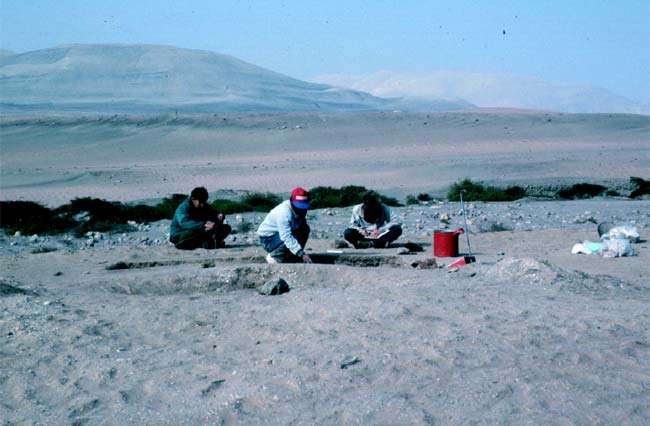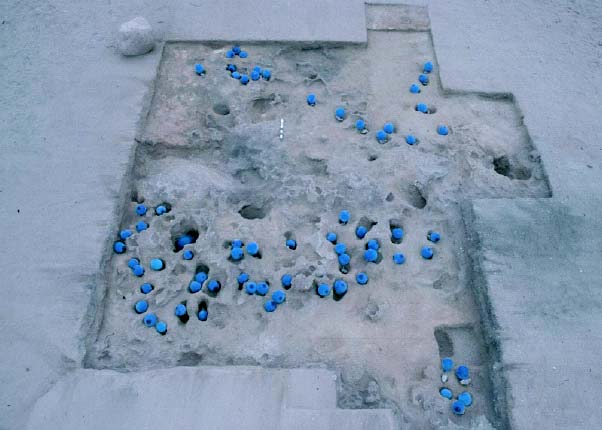An early South American fishing settlement

Excavation at Quebrada Jaguay
Built on the bank of a seasonal stream on the south coast of Peru, Quebrada Jaguay is the oldest known fishing site in the New World. Archaeological research conducted there by a University of Maine team has shown that the inhabitants were sophisticated fishermen who targeted particular species of fish and shellfish from as early as about 13,000 years ago until about 8000 years ago.
South America's Earliest Fishermen
From the start of human settlement of South America people built houses (among the earliest known in the New World) and carried out domestic activities such as cooking and finishing chipped stone tools. During the first occupation, dating to around 13,000-11,000 years ago, obsidian from the highland Alca source 130 km distant indicates contact with the mountainous interior. Very likely these people moved seasonally between the coast and the Andes. Later, during the early Holocene, obsidian is much rarer and many sites suddenly appear in the surrounding countryside. By this time, some people may have lived year-round on the coast, moving seasonally from the quebrada bank where water flows in the summer to the foothills where dense fog provides water and vegetation in the winter. The site and region seem to have been abandoned after 8000 years ago, when many records suggest an extended dry period that lasted for about 4000 years. Though the Quebrada Jaguay site was never reoccupied, other sites in the region date to about 4000 years ago, but their contents suggest a different way of life than that of the earlier settlements.

Selected References:
Sandweiss, D.H., H. McInnis, R.L. Burger, A. Cano, B. Ojeda, R. Paredes, M. Sandweiss, and M. Glascock, 1998, Quebrada Jaguay: Early Maritime Adaptations in South America, Science, 281, 1830-1832.
Sandweiss, D.H., D.K. Keefer, and J.B. Richardson III, 1999, First Americans and the Sea, Discovering Archaeology 1(1): 59-65.
Sandweiss, D.H., A. Cano, B. Ojeda, and J. Roque, 1999, Pescadores paleoíndios del Perú, Investigación y Ciencia, October 1999, No. 277: 55-61 [Spanish edition of Scientific American].

